Posts Tagged: gardens
Nature Day Celebration: Pride of Madeira, Pride of The Hive
If you've recently visited the pollinator gardens at The Hive, a family business owned by Z Specialty Food, 1221 Harter Way, Woodland, you've...
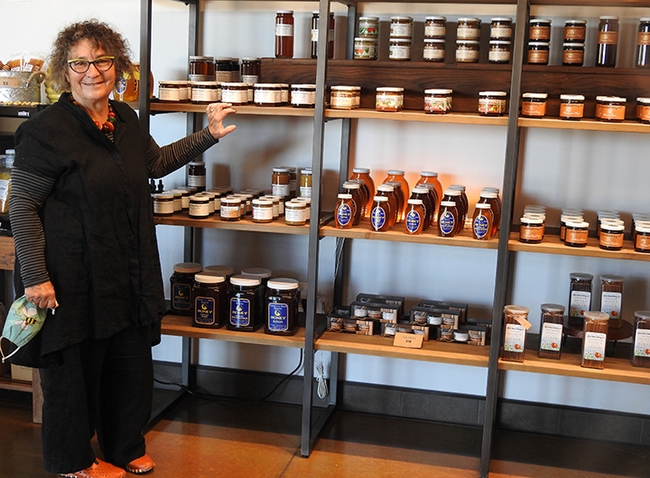
"Queen Bee" Amina Harris of Z Specialty Food is also the executive director of the UC Davis Honey and Pollination Center. (Photo by Kathy Keatley Garvey)

Josh Zeldner, nectar director at Z Specialty Food, stands by the bee-themed conference table. (Photo by Kathy Keatley Garvey)
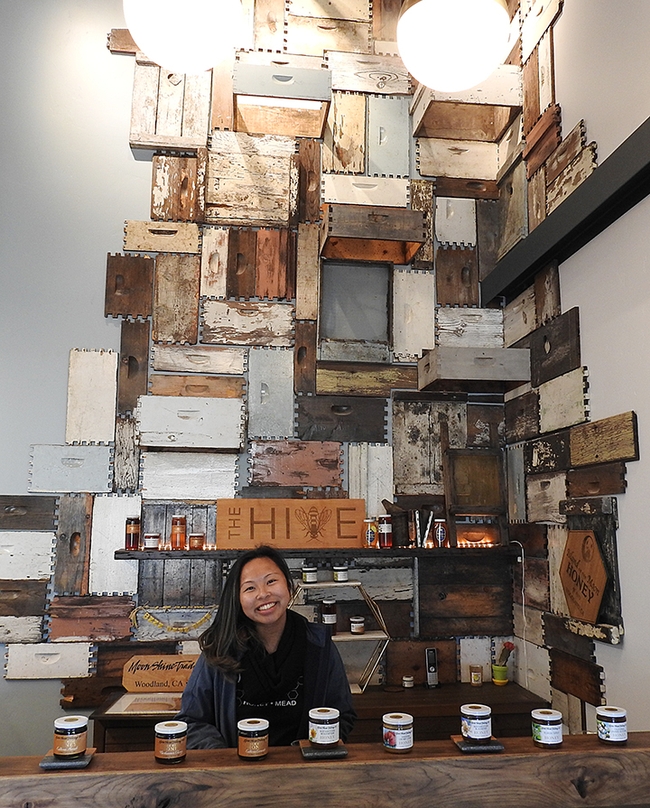
Liz Luu, formerly of the UC Davis Honey and Pollination Center, serves as the marketing manager and the tasting room manager. (Photo by Kathy Keatley Garvey)

A wide-angle of The Hive. (Photo by Kathy Keatley Garvey)
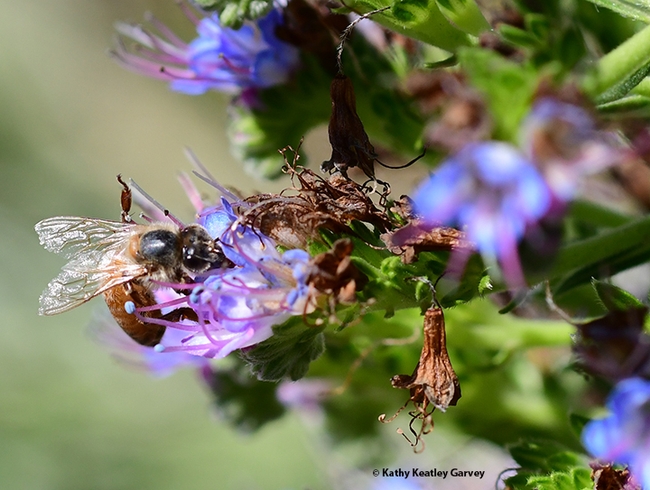
This honey bee appears to be giving a "high five" of approval as it forages on the Pride of Madeira. (Photo by Kathy Keatley Garvey)
A Hidden Treasure at UC Davis Biodiversity Museum Day
Talk about those tenacious tidy tips. And those picture-perfect phacelias. When you attend the UC Davis Biodiversity Museum Day on Saturday, Feb....
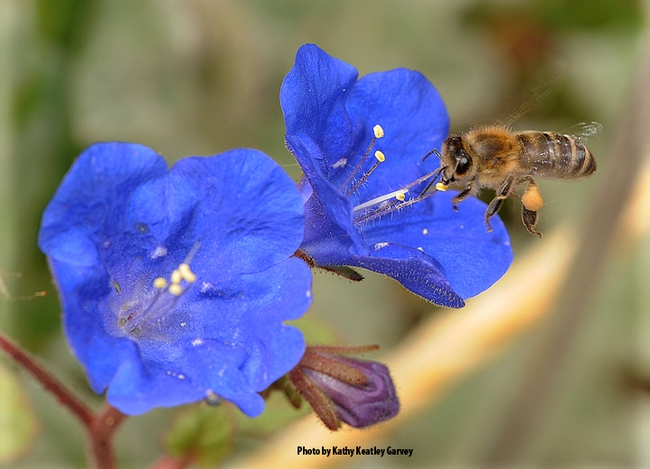
A honey bee foraging on a desert bell, Phacelia campanularia, an annual herb that is native to California. (Photo by Kathy Keatley Garvey)
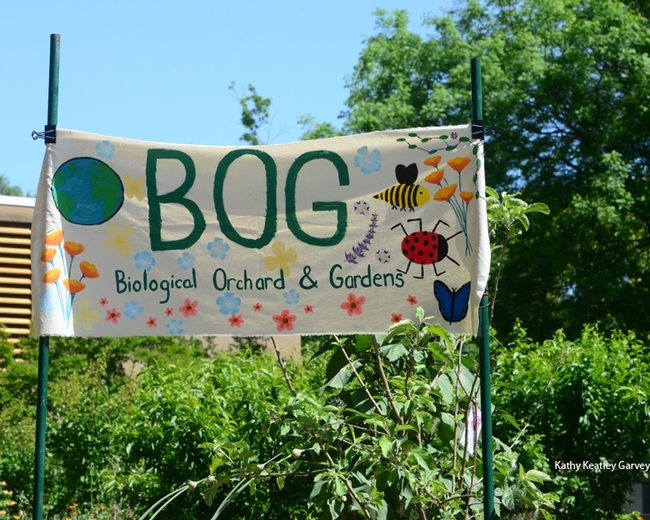
A sign defines the Biological Orchard and Gardens (BOG). (Photo by Kathy Keatley Garvey)
From Out of the Blue Pops the Anthophora
From out the blue. And sometimes it's too good to be true. We were visiting the Sunset Gardens at the Sonoma (Calif.) Cornerstone on...
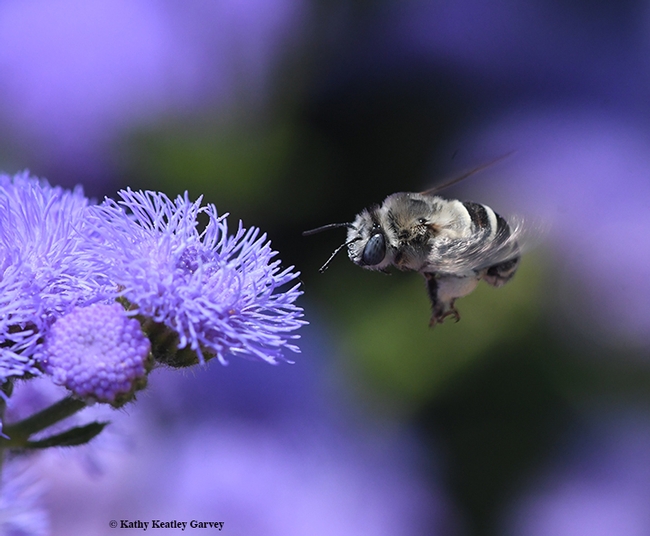
First of four images: A digger bee, Anthophora urbana, heads for a Ageratum houstonianum 'Blue Horizon' at the Sunset Gardens, Sonoma Cornerstone. (Photo by Kathy Keatley Garvey)
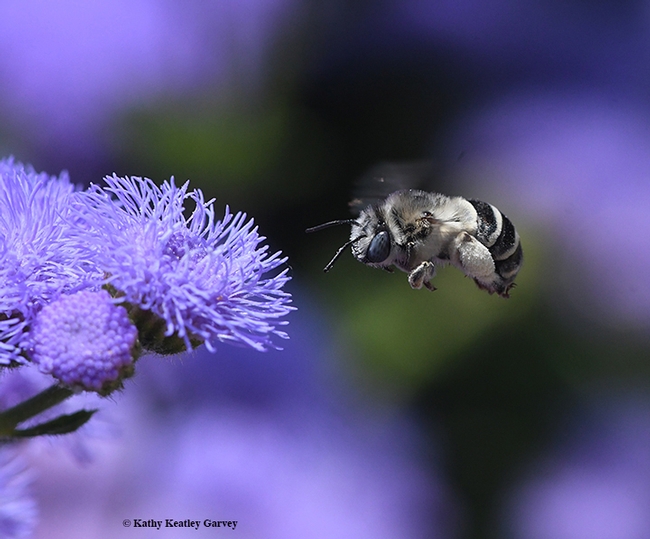
Second of four images: A digger bee, Anthophora urbana, heads for a Ageratum houstonianum 'Blue Horizon' at the Sunset Gardens, Sonoma Cornerstone. (Photo by Kathy Keatley Garvey)
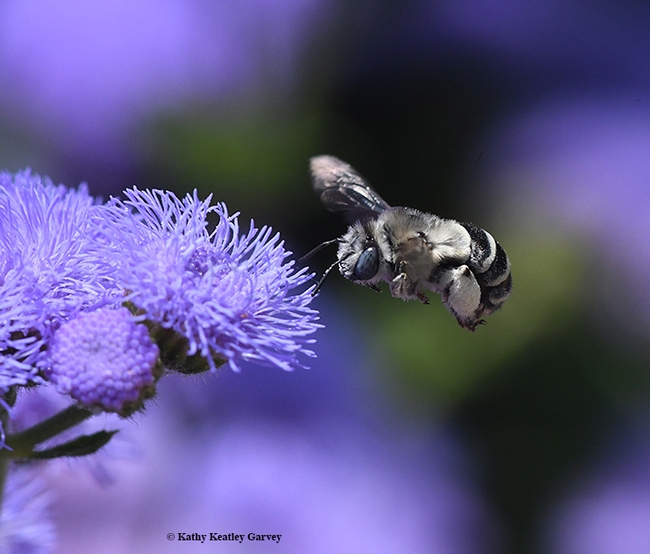
Third of four images: A digger bee, Anthophora urbana, heads for a Ageratum houstonianum 'Blue Horizon' at the Sunset Gardens, Sonoma Cornerstone. (Photo by Kathy Keatley Garvey)
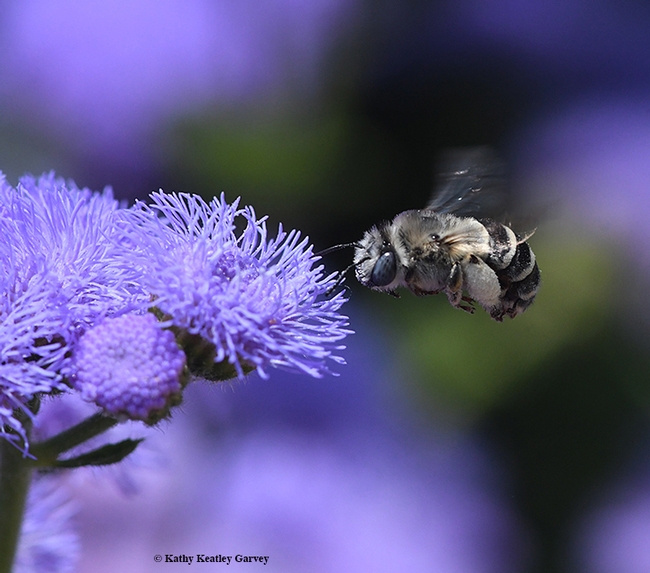
Fourth of four images: A digger bee, Anthophora urbana, heads for a Ageratum houstonianum 'Blue Horizon' at the Sunset Gardens, Sonoma Cornerstone. (Photo by Kathy Keatley Garvey)
This BOG in the Heart of UC Davis Is a Treasure
"A bog is a wetland that accumulates peat, a deposit of dead plant material—often mosses, and in a majority of cases, sphagnum...
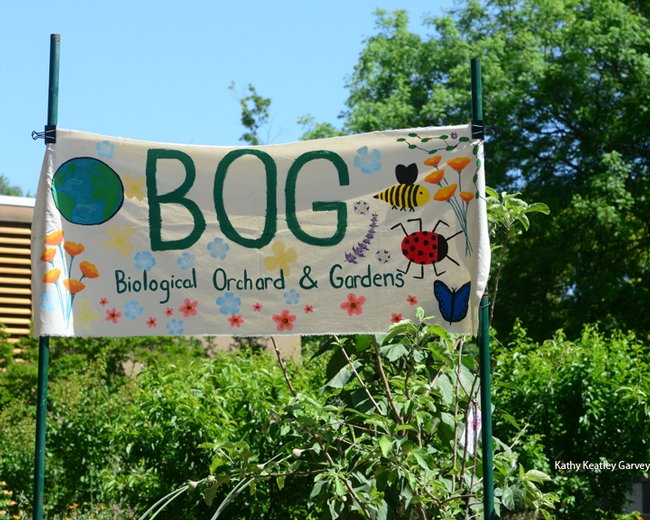
The Biological Orchard and Gardens (BOG) sign features floral and insect designs. It's located by the Mann Laboratory, UC Davis campus. (Photo by Kathy Keatley Garvey)
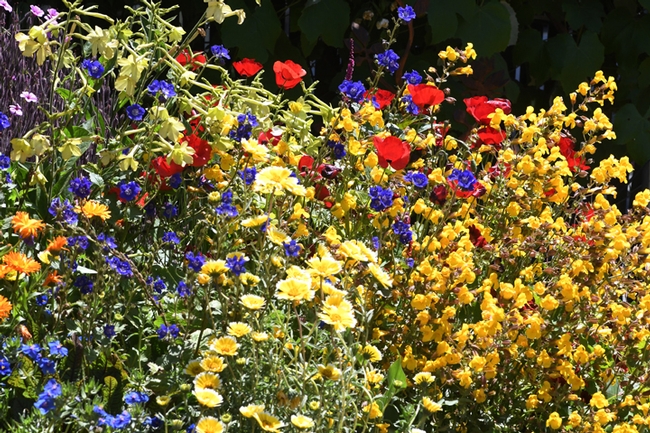
Colorful BOG garden in the early spring: among the flowers are tidy tips, desert bell, and European red flax. (Photo by Kathy Keatley Garvey)
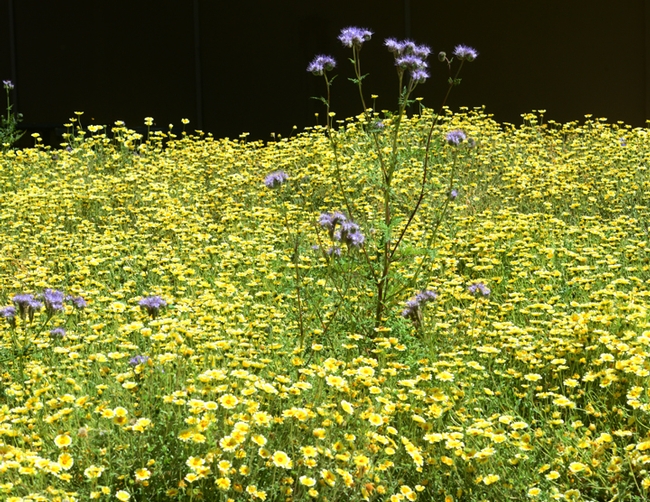
A mini-meadow of tidy tips, Layia platyglossa, with tall phacelia, Phacelia tanacetifolia. (Photo by Kathy Keatley Garvey)
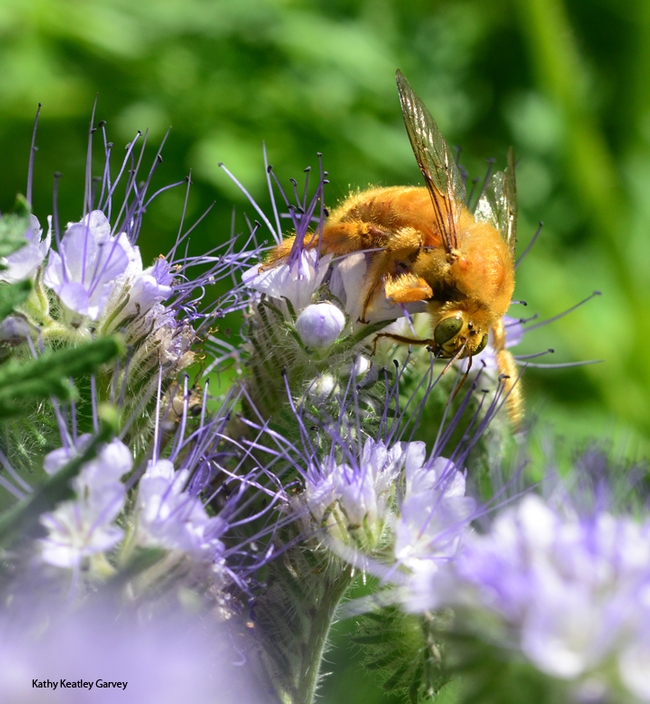
A male Valley carpenter bee, (Xylocopa varipuncta) forages on phacelia. (Photo by Kathy Keatley Garvey)
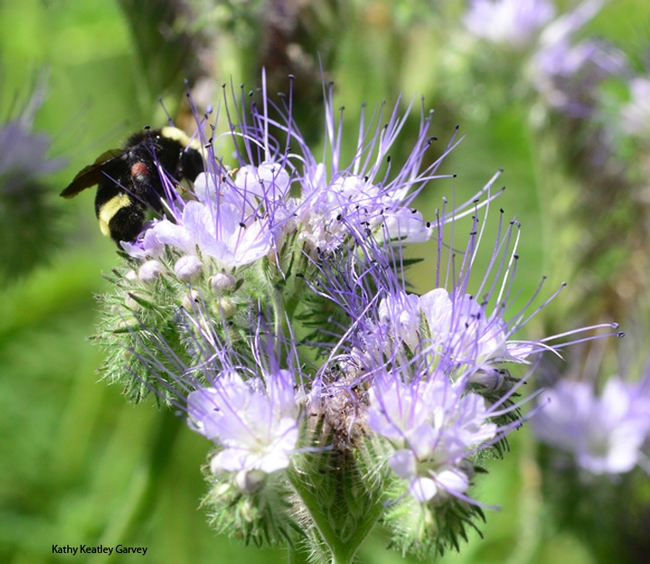
A yellow-faced bumble bee (Bombus vosnesenskii) sips nectar from phacelia. (Photo by Kathy Keatley Garvey)
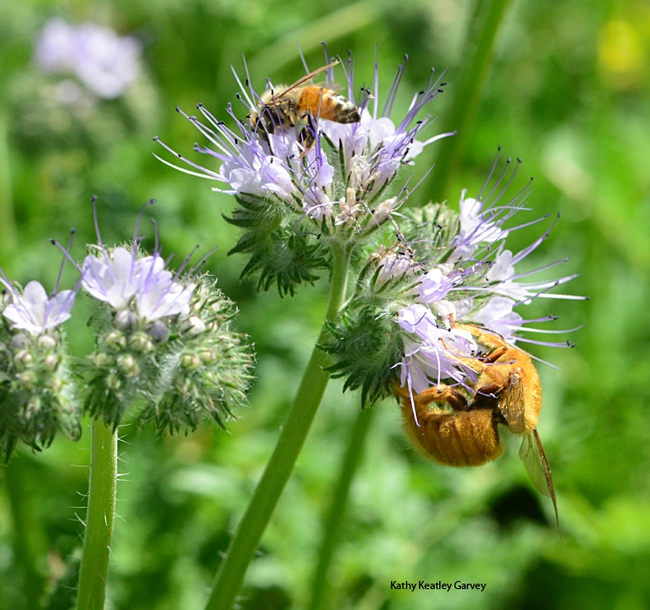
Size comparison! A honey bee is dwarfed by a male Valley carpenter bee, Xylocopa varipuncta. (Photo by Kathy Keatley Garvey)
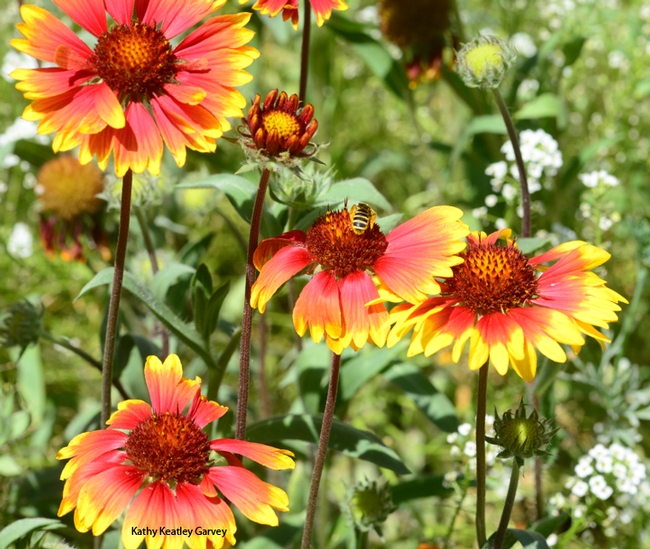
Many species of bees--as well as butterflies and other insects--are drawn to the blanketflower, Gaillardia. (Photo by Kathy Keatley Garvey)
It's Pollinator Discovery Day Sunday at UC Davis
Meet the pollinators, And meet the UC Davis researchers, UC Master Gardeners, students and community members who study them or promote them. That's...
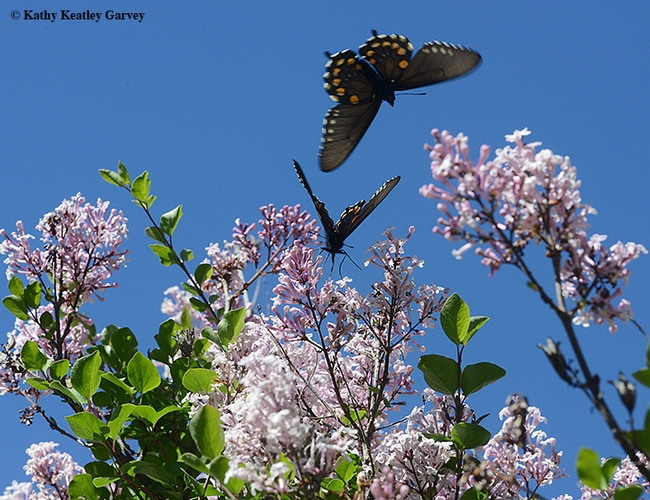
Pipevine swallowtails at the UC Davis Arboretum. (Photo by Kathy Keatley Garvey)
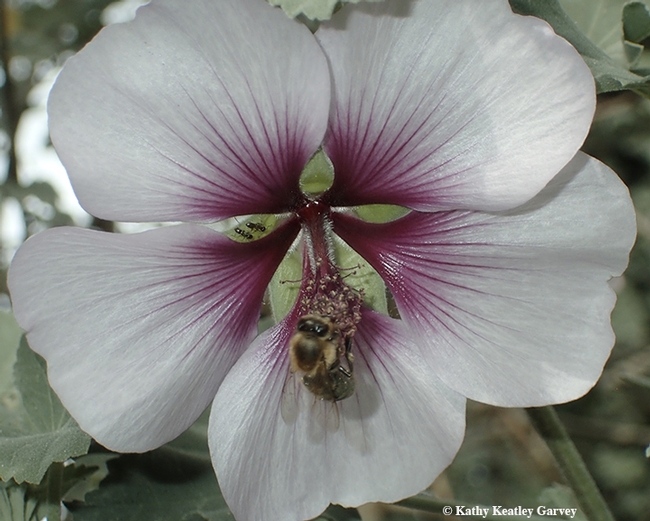
A honey bee foraging in mallow at the UC Davis Arboretum. (Photo by Kathy Keatley Garvey)

